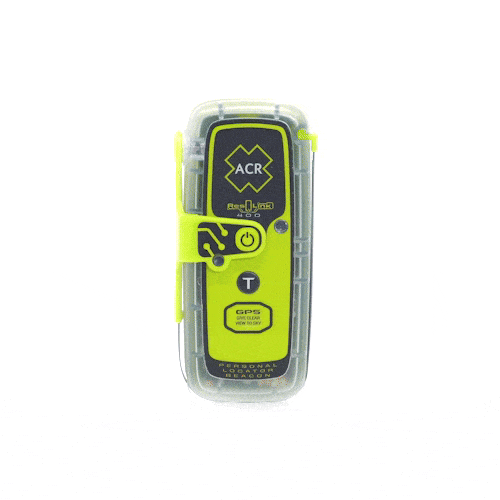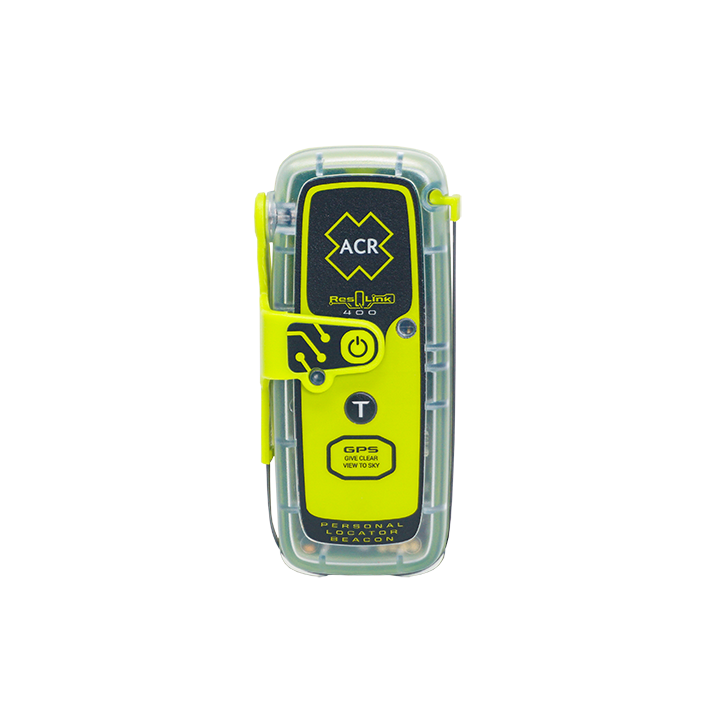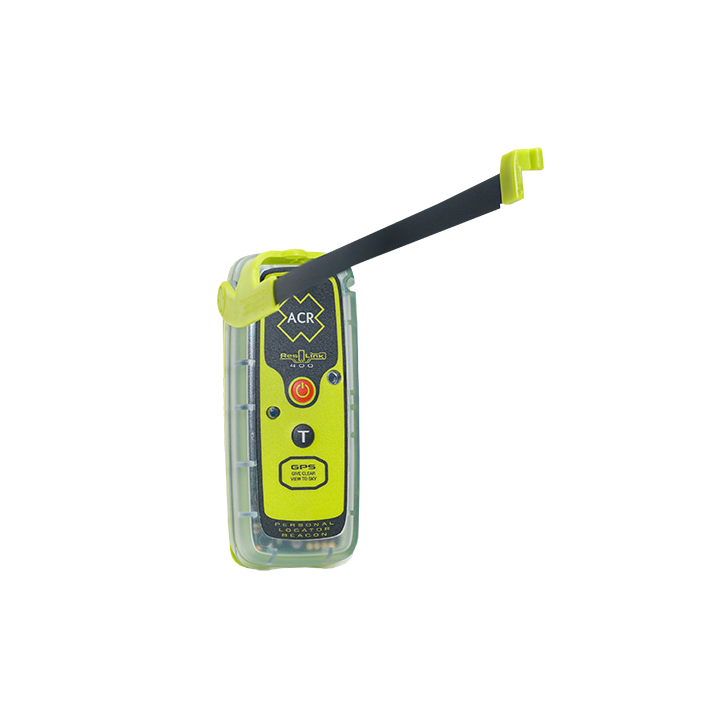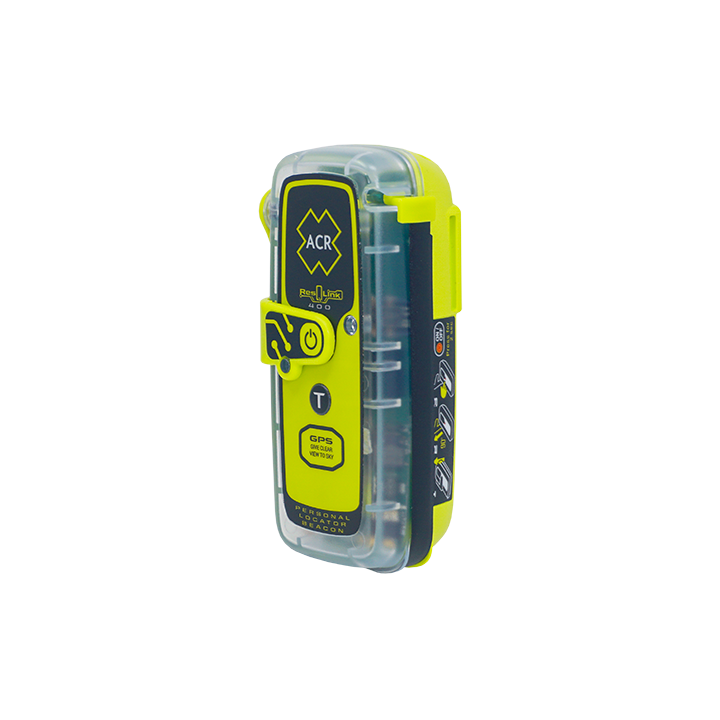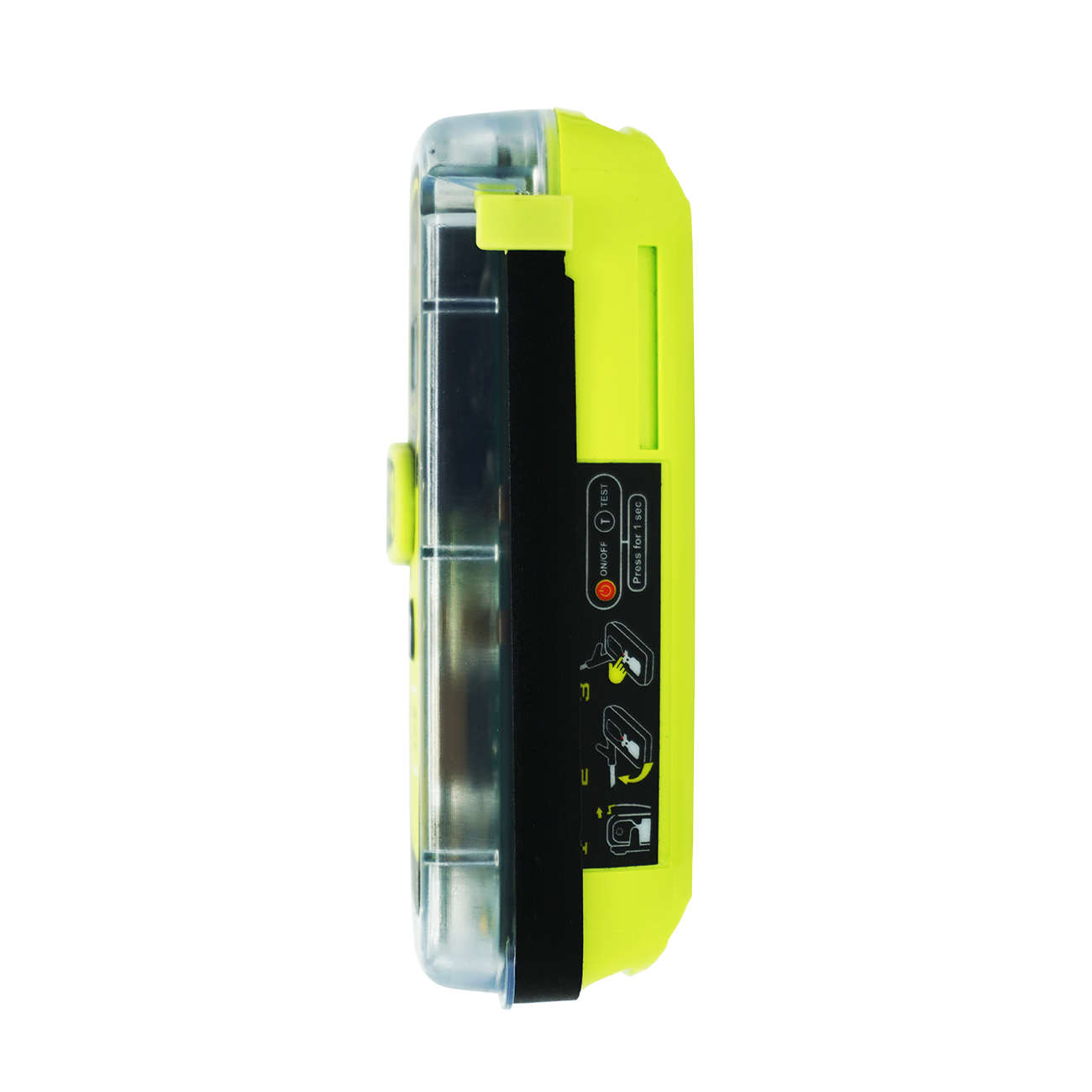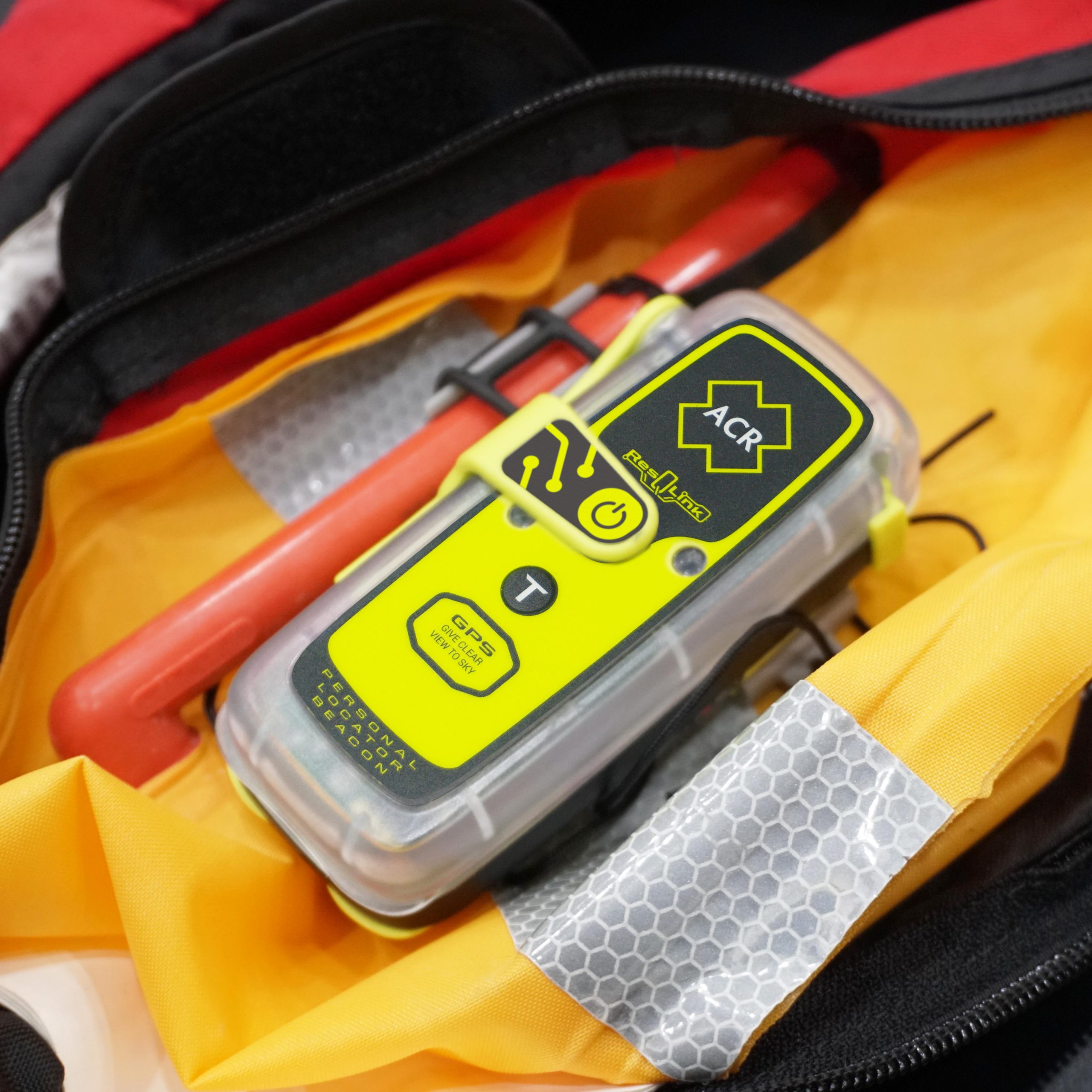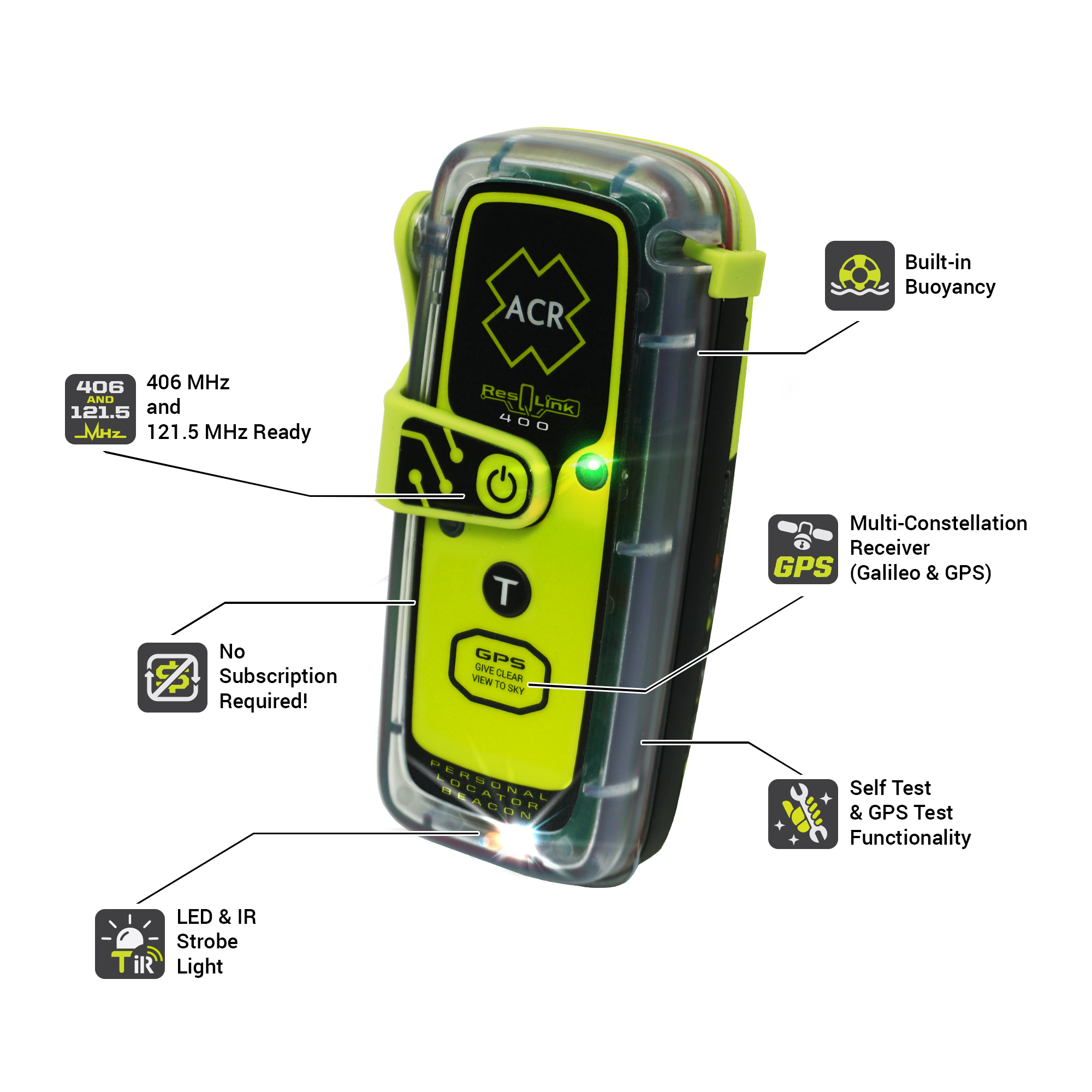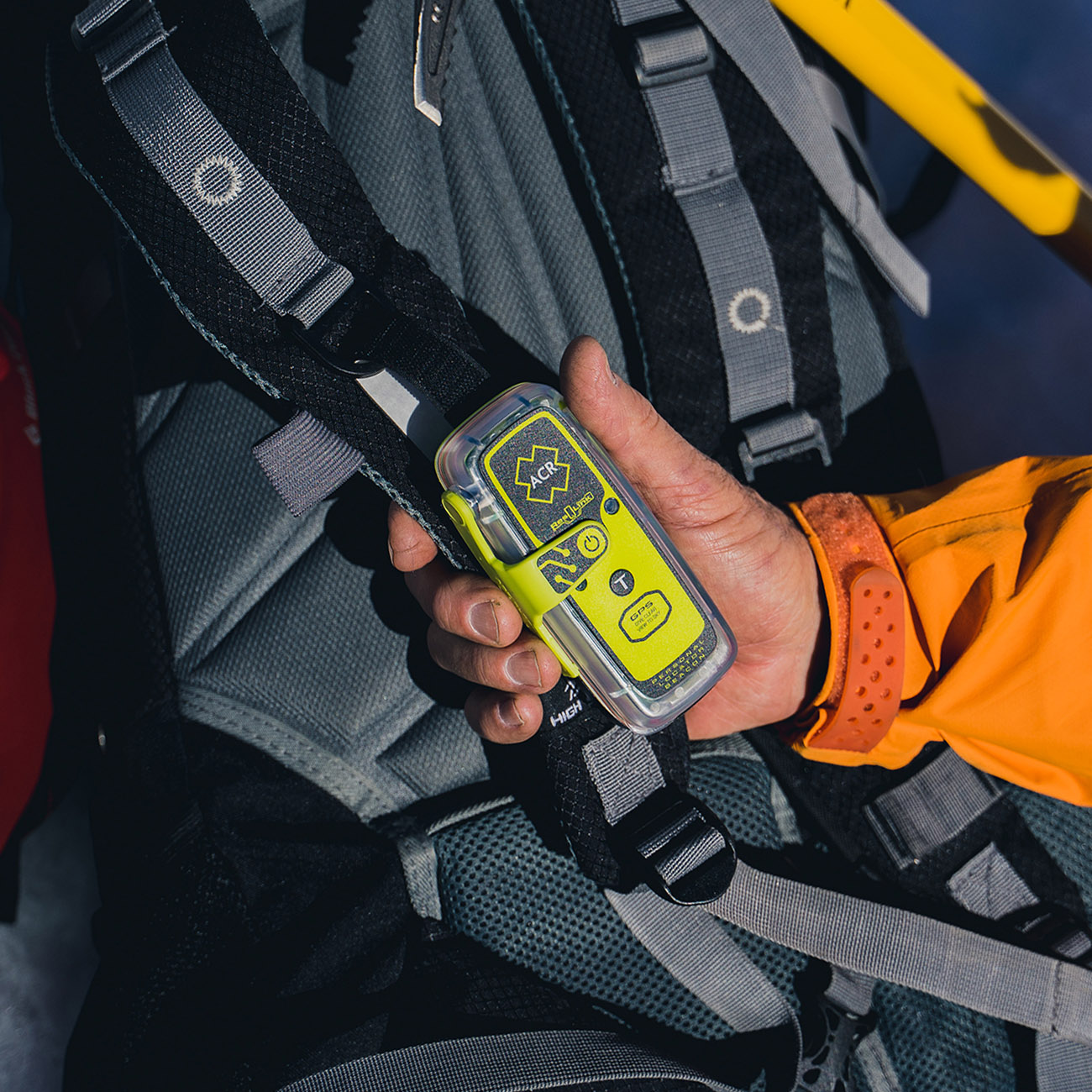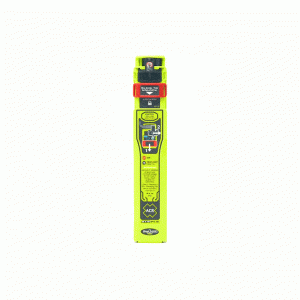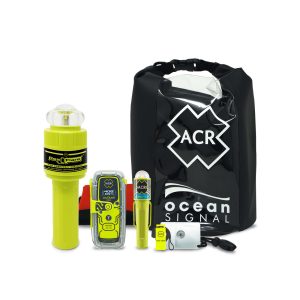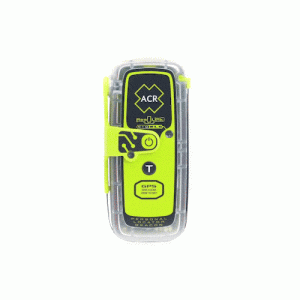Q: What are the differences between the ResQLink 400 and ResQLink View Personal Locator Beacons?
The primary differences are:
- The ResQLink View includes a digital display that shows live beacon status and GPS coordinates
- The ResQLink View features 28 hours* operational life versus the 24+ hours* operational life of the ResQLink 400
- When purchased, the ResQLink View includes Exclusive ACR Skins (allows users to customize their beacon and tailor it to their lifestyle or preferred activities)
*Based on test report from an accredited laboratory.
Q: How do I register my beacon?
406 MHz Beacons must be registered with the National Authority of the country you live in.
Step 1. Visit our Registration database to find the appropriate National Authority
Step 2. Register with your countries National Authority via Mail, Fax, or for the fastest service register online.
Registration in the United States
The national authority that accepts beacon registrations in the United States is the National Oceanic and Atmospheric Administration (NOAA). Here are three easy ways to register:
1.) The fastest and easiest way to register is online at www.beaconregistration.noaa.gov . Recommended method. Verify and validate information before submitting.
2.) Mail the registration form with the pre-addressed, postage-paid envelope to:
SARSAT BEACON REGISTRATION
NOAA
NSOF, E/SPO53
1315 East-West Hwy
Silver Spring, MD 20910
Please print legibly.
3.) Faxing a registration is also acceptable. Fax the registration form to the Fax number on the bottom of the registration form. To reduce the possibility of erroneous entry please verify the legibility of information and validate information on the form to UIN on the beacon before faxing. Please print legibly and in BLACK ink.
All registration forms will be entered in the 406 MHz beacon registration database within 48 hours of receipt. The information you provide on the registration form is used for rescue purposes only.
A confirmation letter, a copy of the actual registration, and a proof-of-registration decal will be mailed to you within two weeks. When you receive these documents, please check the information carefully to ensure that the information provided on the label agrees with the information on the beacon and then affix the decal to your beacon in the area marked “BEACON DECAL HERE.” If you do not receive confirmation from NOAA in the expected timeframe, or if the information on the label is incorrect call toll-free 1-888-212-7283 for assistance.
Registration outside of the United States
In countries other than the United States, 406 MHz beacons are registered with that country’s national authority at the time of purchase. The sales agent should have assisted you in filling out the forms and sending them to the country’s national authority. Alternatively, visit our Registration database or many countries allow online registration in the International 406MHz Beacon Registration Database (IBRD) at www.406registration.com.
To verify that the unit is properly programmed for your country, view the UIN label on the back of the unit. In the event that the beacon is not programmed for your country, the sales agent (if properly equipped) can reprogram the unit for the correct country.
Q: What are my obligations with regard to registering and re-registering my beacon?
A beacon should be registered at the time of purchase or installation. The registration of a beacon is valid for 2 (two) years. The owner should re-register the beacon every two years. If a change of ownership occurs, the original owner must notify the authorities and de-register the beacon before the new owner can register.
Q: Why is it so important for me to register my beacon?
Registering the EPIRB, ELT or Personal Locator Beacon is required by law in the United States and in most countries. Registering is very important because should your beacon ever be activated, it is how Search and Rescue Teams will know who you are, and contacts provided may be able to supply information about your specific travel plans. In the absence of this information, it may take longer for a search-and-rescue operation to begin.
Q: I tried to register my beacon but the authorities tell me that it needs a different ID number programmed in. Do I need to send this back to you?
This can be done by any Certified Battery/Service Center. Please have your registration form and beacon available when contacting a Certified Battery Replacement Center for assistance.
Q: Where do I take/send my unit for battery service?
Visit our Battery / Service Locator. Contact the battery/service station for instructions on how to send the beacon to them. Please contact the BRC for the cost of this service.
Q: How do I know when the battery is due for replacement?
There is a battery expiration date label on every beacon.
An example of a Battery Replacement Date is 07/2010
Q: Can I buy a battery from you and replace it myself?
No. The battery cannot be purchased. This is a life-saving device and you need to have the tools, hardware, and software to perform a battery replacement. Full functional testing is done on the unit, after the battery is replaced, to make sure that the unit will last another 5 years in the field. The battery of any EPIRB, ELT, or Personal Locator Beacon needs to be replaced by an ACR/Artex Certified Battery Replacement Center (BRC), where trained technicians will perform this service.
Q: What will happen if I do not replace the battery every five years?
The chances of surviving a life-threatening situation are greatly diminished if proper care and maintenance are not given to a beacon.
Q: Do I have to replace the battery if the beacon goes off by mistake and why?
Yes, as this is a lifesaving device it should be diligently maintained to perform as specified. For this unit to transmit for the full 24 hours it will need a new battery as any inadvertent activation will deplete the existing battery.
Q: Where do I dispose of a beacon battery?
For information about the disposal of lithium batteries or products with lithium batteries in them, please contact your local waste management company.
Q: Is there any special instruction for shipping a battery or a unit with the battery in it?
There may be, depending on the beacon that you have. Due to transportation regulations changes, some ACR & Artex products that contain lithium batteries may need to be shipped as Hazmat. Please visit the product page for your product and review the download tab for the Material Safety Data Sheets (MSDS).
Q: Is there a local service center where I can get my beacon serviced?
Find a battery/service center here.
Q: How do I know the beacon is working?
Perform a monthly self-test. If the test passes, the beacon is working. If self-test does not pass, take/send the beacon in for service.
Q: How often should I carry out a Self Test?
The beacon owners’ manual usually recommends the frequency of these tests.
Advanced Satellite Testing can be performed using our new service called 406Link.com
Q: What is a GPS Self Test?
Newer GPS (sometimes referred to as GNSS) equipped beacons may also include an optional GPS Satellite Acquisition Self Test (not all GPS beacons have this ability), which tests the operation of the GPS Receiver and its ability to encode your location into the transmitted distress message. It is not uncommon for this test to only be permitted to be performed once or twice over the life of the battery (e.g. every couple of years), as this type of test can significantly reduce the battery life of the beacon. For beacons installed in commercial craft there are often regulatory requirements that define how often these tests should be performed.
GPS Testing with 406Link.com
Current ACR GlobalFix EPIRBs and older Model Personal Locator Beacons (AeroFix, TerraFix, AquaFix, MicroFix, ResQFix) have the ability to perform a GPS Test, however, this GPS Test is not transmitted to the satellites, so if you have an account with 406Link.com your GPS Coordinates will not appear.
New ACR Personal Locator Beacons can perform GPS Self Tests that will actually transmit to your GPS Coordinates to the satellites and with 406Link.com pinpoint your location onto a map. These tests are limited to 60 Self-Tests and 20 GPS Self-Tests for the PLB-400 and PLB-425 Models over the 5 year life of the battery.
Q: What should I do if I get a Self Test failure?
If you get a Self Test failure, first check the instructions in the user manual supplied with your Beacon, make sure you carried out the test correctly, and that you have followed any instructions provided. If you are sure your Beacon failed the self-test then you should contact the beacon manufacturer or one of their appointed service agents for further advice and instructions.
Q: Are there any Beacons that I can’t test Through the Satellites?
Yes, in particular, some older models of Beacons do not transmit a 406 MHz burst, so they cannot be tested in this way. In addition, some current other manufacturers’ models of Beacon incorporate features (e.g. a rolled-up one-time-only use antenna) that reduce their radiated power output during a Self Test and therefore these beacons do not transmit a signal that is strong enough to reach the satellites.
Learn more at 406Link.com
Q: How does the GPS Self Test feature work?
A lot of beacons on the market have the capability to do a GPS test, in which the beacon turns the GPS engine on, acquires GPS data, and flashes a light to signify the test is completed.
New Personal Locator beacon models from ACR have the ability to transmit this GPS location in a self-test burst and pinpoint your exact location on a map using 406Link.com ensure you that (1) your beacon is working perfectly and can reach the satellite system and (2) that your GPS is working perfectly.
Q: How many Self Tests and GPS Tests can I perform?
Tests are limited to 60 Self-Tests and 20 GPS Self-Tests for the PLB-400 and PLB-425 Models over the 5-year life of the battery.
Learn more about advanced satellite testing through the satellite system at 406Link.com.
Q: What do PLBs do?
Personal Locator Beacons (PLBs) are distress radio beacons that transmit location information about individuals directly to Search and Rescue forces letting them know that the owner is in the grave and imminent danger.
Q: Where can I purchase a beacon?
Visit our Dealer Locator
Q: Can 406 MHz beacons be used anywhere in the world?
Yes, 406 MHz beacons can be used anywhere in the world, including the Poles.
Q: Is there a subscription fee for beacon registration or rescue service?
Beacon registration is free, should you ever have to activate your beacon, rescue is free in most parts of the world.
Q: When do you use a Beacon?
Most Search-and-Rescue (SAR) organizations instruct that beacons are satellite signaling devices of last resort, for use when all other means of self-rescue have been exhausted, where the situation is grave with imminent danger and the loss of life, limb, eyesight, or valuable property will occur without assistance.
Q: Do I need a radio license?
For the latest information, in the United States, you may contact the Federal Communication Commission at toll-free 1-888-CALLFCC or visit the website of the FCC. Outside of the United States, contact your local authority for the requirements.
Q: What is a UIN and where do I find it on the beacon so I can register my beacon?
A UIN is a Unique Identifier Number that is programmed into each beacon at the factory. The UIN number consists of 15 digit series of letters and numbers that make up the unique identity of the beacon. The UIN is on a white label on the exterior of the beacon. The UIN is also referred to as the Hex ID.
Q: Is it true that certain emergency beacons no longer work?
The 121.5MHz and 243 MHz beacons are no longer satellite detectable. The beacons may still function but the emergency satellite system will no longer detect the emergency signals from these frequencies. Please read the explanation of the phase-out of the 121.5/243 MHz frequency from Cospas-Sarsat at http://www.sarsat.noaa.gov/phaseout.html.
If you have a 121.5 MHz or 243 MHz beacon, you should upgrade to a new 406 MHz beacon.
Q: Can I take my beacon with me on an aircraft?
You may wish to check with the airline about any restrictions or documentation that you may need to carry with the unit. We suggest that you print a copy of the MSDS and bring it with you. We also recommend that you carry the Product Support Manual to explain what the unit is (MSDS sheets and Manuals can be found on the product web page).
Q: What happens if I set off a false alert by mistake?
Don’t panic, as long as it was a genuine mistake and not deliberate you have nothing to worry about, however, you must turn off your Beacon and contact the emergency services as quickly as possible to let them know your transmissions are a False Alert.
Deliberate misuse or not notifying the proper authority may incur a severe penalty. When you call be prepared to provide the following information:
The beacon Unique Identifier Number (UIN) (15 Hex ID printed on the beacon),
- Date
- Time and duration of the false alert
- Location of the beacon at the time of the false alert
- Cause of the false alert
The primary contact point in the United States for the notification of False Alerts is the United States Air Force Rescue Coordination Center (USAFRCC) the telephone number is 1-800-851-3051. However, if you have an EPIRB you can contact the United States Coast Guard (USCG) in the following areas: Atlantic Ocean / Gulf of Mexico USCG Atlantic Area Command Center Tel: (757)398-6390 Pacific Ocean Area / USCG Area Command Center Tel: (510) 437-3700 USCG HQ Command Center Tel: (800) 323-7233. If you have an ELT as well as contacting the USAFRCC you might also want to contact your local Flight Service Station (FSS) on 1-800-WXBRIEF (1-800-992-7433).
